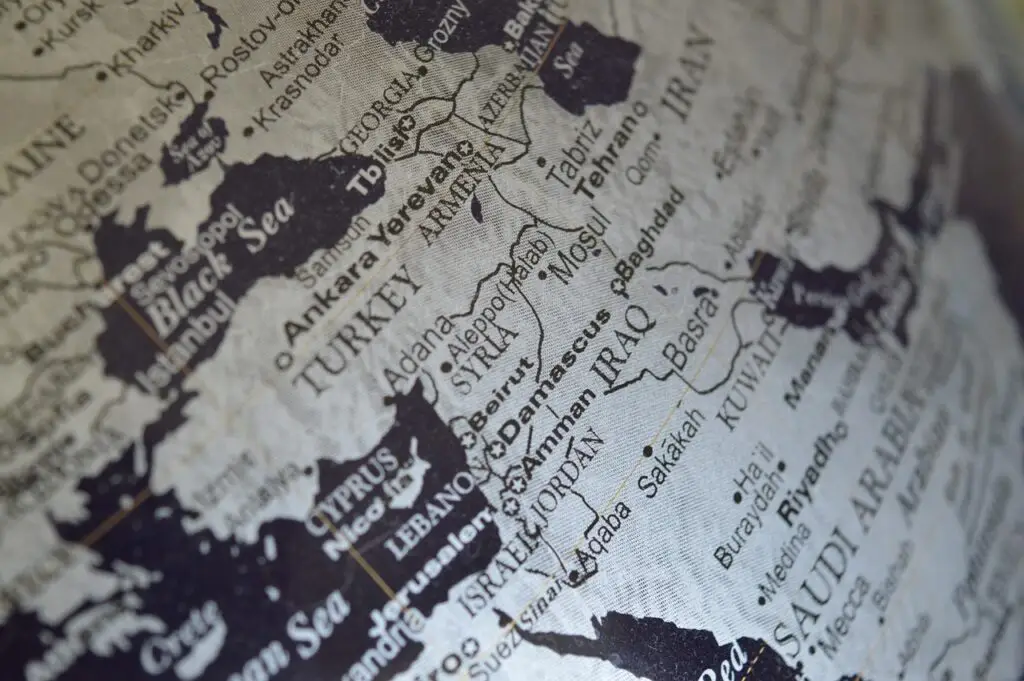
$24,000 From Every Taxpayer: The Shocking Secret Cost of the Iraq War You’re Still Paying For.
Ever look at your paycheck and wonder where it all goes? We all do. We think about taxes funding roads, schools, and healthcare. But what if I told you that a significant chunk of your hard-earned money—enough to buy a new car or put a down payment on a house—went to a war that ended years ago?
It’s not a conspiracy theory. It’s a cold, hard fact.
According to a detailed study by Brown University’s Watson Institute, the “War on Terror,” with the Iraq War as its centerpiece, has cost American taxpayers a mind-boggling $5.6 trillion.
Let that sink in. Not billion. Trillion.
To make it even more shocking, the National Priorities Project broke it down. Since 2001, the cost has been running at $32 million per hour.
But what does that mean for you?
It means that since the wars began, every single American taxpayer has spent nearly $24,000.
Think about what you could do with $24,000 right now.
-
Buy a brand-new Honda Accord.
-
Cover the average down payment on a home.
-
Pay for a full year of tuition at a public university.
That money is gone. It was spent on military operations, equipment, and interest on the debt we took on to pay for it all. And the bills are still coming in. This staggering figure includes future obligations, like the lifelong medical care and social services for the veterans who bravely served.
When the Bush administration first proposed the war in 2003, they told the American people it would cost between $50 to $60 billion. Nobel Prize-winning economist Joseph Stiglitz later calculated the true cost was closer to $3 trillion, and even he admitted that estimate was probably too low.
The war may be over, but the financial black hole it created is still impacting our economy, our national debt, and your wallet. Next time you look at your pay stub, remember the hidden cost of a conflict that continues to shape our financial reality.

“We Have Nothing”: The Secret Memo from Saddam Hussein That Proves the Iraq War Was a Lie.
What if the entire reason for a war—a conflict that cost trillions of dollars and hundreds of thousands of lives—was based on a lie?
In 2003, the world was told that Iraq, under Saddam Hussein, was a clear and present danger. The justification was simple and terrifying: Saddam had a hidden arsenal of Weapons of Mass Destruction (WMDs) and was ready to use them. It was the reason we had to act, and act fast.
There was just one problem. The WMDs didn’t exist.
And the most shocking part? Top officials knew it.
After the invasion, an 18-month, exhaustive search by hundreds of American, British, and Australian intelligence experts—the Iraq Survey Group—combed every inch of the country. Their conclusion? They found no evidence of any active WMD programs.
David Kay, the man who initially led the hunt, resigned in frustration, stating bluntly, “I don’t think they existed.”
So where did the “proof” come from? A Pentagon Inspector General’s report later revealed a disturbing truth: a special office, run by Douglas Feith, was created specifically to “falsify intelligence.” This shadow intelligence unit bypassed the CIA, which refused to provide the clear-cut indictment the White House wanted. They manufactured “evidence” to connect Saddam to both WMDs and Al Qaeda.
Intelligence officials on both sides of the Atlantic were reportedly “furious,” claiming their briefings were twisted and assessments showing Iraq was not a threat were deliberately ignored.
But the most damning evidence comes from Saddam Hussein himself. In millions of pages of internal Iraqi records seized after the war, there is no mention of a WMD program. In fact, the opposite is true. In a closed-door meeting in the late 1990s, Saddam told his inner circle:
“You might think we still have hidden chemical weapons, missiles and so forth. We have nothing; not even one screw.”
The truth was there. It was in the Iraqi archives. It was in the assessments of intelligence professionals. But it was ignored. The world went to war based on a narrative that was carefully crafted, not one that was true.

The $5.7 Trillion Oil Shock: How the Iraq War Secretly Transferred Global Wealth?
They said the war wasn’t about oil. But the numbers tell a different story.
While the world was focused on the hunt for WMDs, the invasion of Iraq triggered one of the largest, quietest transfers of wealth in modern history—all thanks to the global oil market.
Before the war, oil prices were hovering around $27 a barrel. But as the drums of war beat louder, the market grew nervous. By the time the invasion was imminent, prices had jumped to over $37 a barrel. It was a sign of things to come.
An expert energy economist, Dr. Mamdouh Salameh, calculated the true impact. His research concluded that the Iraq War was responsible for about 63% of the massive oil price surge between 2003 and 2008.
Here’s why: The war and subsequent chaos effectively removed 2-3 million barrels of Iraqi oil per day from an already tight global market. With demand from countries like China and India soaring, this supply disruption was catastrophic for prices.
Without the war, Dr. Salameh projected that oil prices would have stabilized around a reasonable $50-55 per barrel. Instead, they skyrocketed.
The result? A massive, invisible tax on every person and business in the world. Dr. Salameh estimates that between 2003 and 2008, the global economy paid an extra $5.73 trillion due to higher energy prices.
Where did that money go?
It flowed directly from the pockets of consumers and energy-importing nations to the coffers of oil-producing countries. In 2007 alone, this wealth transfer amounted to $1.3 trillion, or about 3% of the entire world’s GDP. Europe, heavily dependent on imported oil, was hit with an additional $1.35 trillion in costs.
So while politicians denied it, the economic reality was clear. The war destabilized a critical oil-producing region, choked the world’s energy supply, and triggered a multi-trillion-dollar transfer of wealth that impacted the global economy for years. It was a conflict paid for not just in blood and treasure, but at the gas pump.

Revealed: How 25 Neocons and a Secret Lobby Pushed America into the Iraq War?
Wars don’t just happen. They are planned, promoted, and pushed by people with powerful agendas. So who really wanted the Iraq War? The answer may surprise you.
According to reports and insider accounts, the idea for the war didn’t come from a widespread consensus in the U.S. government. Instead, it was championed by a small but incredibly influential group of about 25 to 30 people known as the “neoconservatives.”
A 2003 report in the Israeli newspaper Haaretz pointed out that this small group, “almost all of whom were Jewish,” were the intellectual architects of the invasion. Their vision was grand and audacious: to completely reconfigure the Middle East. They believed that by toppling dictatorial regimes—starting with Saddam’s Iraq—they could spread democracy throughout the region.
Not by coincidence, the regimes they targeted—Iraq, Iran, and Syria—were all staunch enemies of Israel. The plan was to start with Iraq, seen as the weakest link, and create a domino effect that would secure Israel’s position and align the Middle East with Western interests.
But an idea is nothing without political muscle. This is where powerful lobbying groups came in.
While it later tried to distance itself, the American Israel Public Affairs Committee (AIPAC), one of Washington’s most powerful lobbies, was a key player. In September 2002, an AIPAC spokeswoman told the Jewish Telegraphic Agency that if the president asked for support for action in Iraq, “AIPAC would lobby members of Congress to support him.”
They did more than just support. At a private AIPAC meeting in January 2003, Executive Director Howard Kohr reportedly boasted that one of the group’s biggest successes of the past year was “quietly” lobbying Congress to approve the use of force.
Prominent neoconservatives like Richard Perle, Douglas Feith, and John Bolton—all holding influential positions—had been advocating for this since the 1990s. They saw the 9/11 attacks not as a tragedy to be mourned, but as the “opportunity” they needed to put their long-held plans into action.
The war in Iraq wasn’t an accident. It was the result of a determined, decade-long campaign by a small group of ideologues who successfully aligned American foreign policy with their own radical vision for the Middle East.

From Saddam to ISIS: How the Iraq War Created the Monsters We Fight Today?
History has a brutal way of creating unintended consequences. The Iraq War is perhaps the most devastating example in our lifetime. The goal was to remove a dictator and bring stability. The result was a power vacuum that unleashed a new generation of monsters.
Before 2003, Iraq was ruled by Saddam Hussein’s iron fist. He was a brutal dictator, but he ruthlessly suppressed extremist factions. His fall didn’t lead to the peaceful democracy planners had hoped for. Instead, it uncorked decades of sectarian tension and created a chaotic free-for-all.
Suddenly, the country was a failed state. With no strong central government, different groups began a violent struggle for control. This is the moment when Al-Qaeda, a group that had no presence in Iraq before the invasion, saw its golden opportunity. They established a franchise known as Al-Qaeda in Iraq.
The war also ignited a firestorm of sectarian conflict between the country’s Sunni minority, who had been in power under Saddam, and the Shia majority, who now sought to claim their dominance. This bloody civil war turned neighborhoods into war zones and created the perfect breeding ground for radicalism.
Al-Qaeda in Iraq thrived in this chaos. They honed their brutal tactics, recruited disenfranchised Sunnis, and grew in strength. Over time, this group evolved. They rebranded.
They became ISIS.
The very organization that would later horrify the world with its beheadings, enslavement, and caliphate across Iraq and Syria was born directly from the ashes of the 2003 invasion. The lack of stability, the sectarian violence, and the anger at foreign intervention were the ingredients they needed to rise.
The instability didn’t stop at Iraq’s borders. It spilled over into neighboring countries. Iran, a Shia power, extended its influence, alarming Sunni countries like Saudi Arabia and sparking a regional proxy war that continues to this day. Millions of Iraqi refugees fled, putting immense pressure on Jordan, Syria, and Lebanon.
We didn’t just invade a country. We shattered a region’s fragile balance of power. In trying to eliminate one threat, we inadvertently created a far more chaotic and dangerous one.

165,000 Civilian Deaths and a Health System in Ruins: The Humanitarian Catastrophe of the Iraq War.
When we talk about war, we often get lost in big numbers: trillions of dollars, barrels of oil, political strategies. But the true cost, the one that matters most, is measured in human lives. And for the people of Iraq, that cost is almost unimaginable.
Let’s be clear: the numbers are horrifying. By 2015, an estimated 165,000 Iraqi civilians had been killed as a direct result of the war. That’s not counting soldiers or contractors. Just ordinary people—mothers, fathers, children—caught in the crossfire.
In 2017 alone, U.S.-led strikes in Iraq and Syria killed up to 6,000 civilians, more than in any previous year of the conflict.
But direct casualties are only part of the story. The real tragedy is even bigger.
Studies estimate that for every person killed by a bomb or a bullet, at least four more have died from the side effects of the war: malnutrition, disease, and the complete collapse of the country’s infrastructure.
Before the invasion, Iraq had a functioning healthcare system. After 2003, it plummeted.
-
Hospitals and clinics were bombed.
-
Supplies of medicine and electricity were cut off.
-
Thousands of doctors and nurses fled the country for their own safety.
Today, getting basic healthcare is a major struggle for millions of Iraqis. The system is broken, and poverty prevents many from seeking the care they need.
The environment is another silent victim. The war has led to severe environmental degradation, reducing farm productivity and destroying the livelihoods of rural families. Growing water shortages, made worse by climate change and damaged infrastructure, have crippled agriculture, especially in the south.
Even now, more than two decades later, the suffering continues. About 1.1 million people in Iraq are still internally displaced, living in camps, unable to return home. An estimated 3 million people are in desperate need of humanitarian assistance just to survive.
This is the legacy of the war that is rarely discussed on the nightly news. It’s a story of profound and ongoing human suffering, a humanitarian catastrophe that continues to unfold long after the troops have gone home.

Iraq War 2.0? The 3 Critical Mistakes America Is About to Make Again.
They say that those who don’t learn from history are doomed to repeat it. When it comes to the Iraq War, this isn’t just a cliché—it’s a terrifyingly real possibility.
The 2003 invasion was one of the biggest strategic blunders in modern history, built on a foundation of critical errors. But are we paying attention? As global tensions rise, it’s crucial to remember the three key mistakes that led to the Iraq disaster, because we are dangerously close to making them all over again.
Mistake #1: Believing Your Own Hype (Intelligence Failure)
The case for the Iraq War was built on “cherry-picked” intelligence. Information that fit the desired narrative (WMDs, Al-Qaeda links) was amplified, while warnings and dissenting views were suppressed or ignored. Policymakers heard what they wanted to hear. In today’s hyper-partisan world, with echo chambers on social media and cable news, the risk of falling for our own propaganda is higher than ever. Are we demanding verified facts, or are we hungry for information that just confirms our biases?
Mistake #2: Ignoring the Price Tag (Economic Ignorance)
The Bush administration claimed the war would cost $50-$60 billion. The real cost is approaching $6 trillion and still climbing. They failed to consider the long-term expenses: veteran care, interest on debt, and the economic “opportunity cost” of what else we could have done with that money. Today, when politicians propose military interventions, do we ever have an honest conversation about the true, decades-long financial burden? Or do we accept vague promises, only to be shocked by the bill later?
Mistake #3: Kicking the Hornet’s Nest (Regional Blindness)
Planners of the Iraq War had a simplistic, almost cartoonish view of the Middle East. They thought that by removing one dictator, a stable democracy would magically appear. They completely failed to understand the complex sectarian rivalries and geopolitical dynamics they were about to unleash. Kicking over the hornet’s nest created chaos that spawned ISIS and empowered our adversaries. As we face new conflicts around the globe, are we taking the time to understand the local culture and power structures, or are we once again assuming a one-size-fits-all solution?
The lessons of Iraq were paid for in blood and treasure. They taught us to be skeptical of intelligence, to demand a full accounting of the costs, and to respect the incredible complexity of the world. The question we must all ask ourselves is: Did we learn anything at all?

